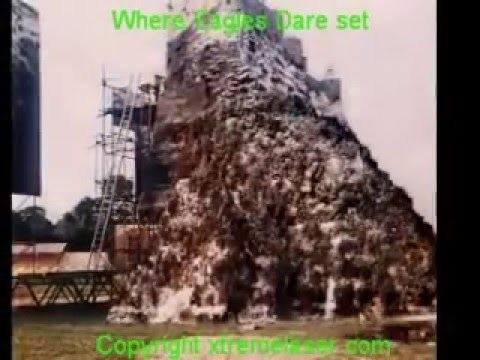 | ||
Mgm british studios
MGM-British was a subsidiary of Metro-Goldwyn-Mayer (MGM) initially established at Denham Film Studios in 1936, but was in limbo during the war. Following the end of hostilities, a facility was acquired in Borehamwood, and remained in use until its closure in 1970.
Contents
Pre-war
The films produced at Denham were A Yank at Oxford (1938), The Citadel (1938), Goodbye, Mr. Chips (1939) and Busman's Honeymoon/Haunted Honeymoon (1940).
Production was initially headed by Michael Balcon. However, he left after a single film and was replaced by Victor Saville. The subsidiary was in abeyance during the war.
Meanwhile, Amalgamated Studios Ltd constructed a large studio on the north side of Elstree Way between 1935 and 1937. A January 1937 deal for eight films to be made for the American studio Columbia Pictures soon collapsed. The company was unable to meet the cost of building work, and sold the facility to Rank, which was not interested in using the studios itself, but wanted to stop John Maxwell's British International Pictures (BIP) from being able to compete more effectively with its own new Pinewood Studios. During the war, the studios were leased from Rank by the Ministry of Works which used them for storage.
Post-war
MGM purchased the former Amalgamated Studios site in April 1944. MGM's Edward, My Son (1949), with Spencer Tracy and Deborah Kerr was the first film to be produced at the studio.
Productions made at the MGM-British studios for the parent company include Ivanhoe (1952), The Dirty Dozen (1967) and 2001: A Space Odyssey (1968). The facilities were hired by other companies; 20th Century Fox shot the film The Inn of the Sixth Happiness (1958) and Lew Grade's ITC used it for television series, including The Prisoner (1967–68). 2001 has been cited as one of the primary causes behind the closure of the studio because Stanley Kubrick's film occupied more and more of the available studio space - eventually using all of it - for almost two years.
The studio was in operation until 1970, one of the last productions being the UFO television series. At that time, MGM made a production and distribution deal with EMI, and began to use its facility (commonly known as Elstree Studios) becoming MGM-EMI, an arrangement which only lasted until 1973, with MGM having a financial interest in only a few films. The Borehamwood site was cleared.
